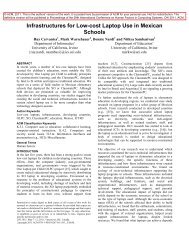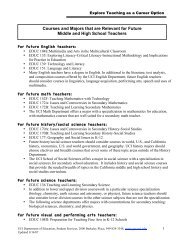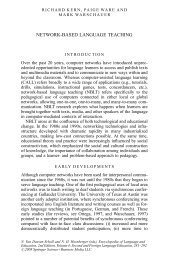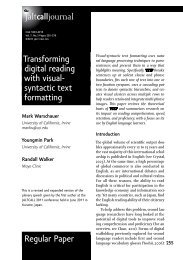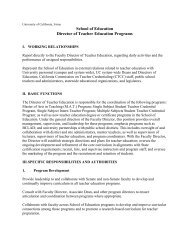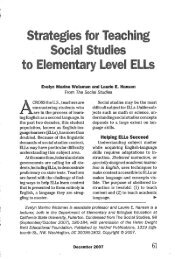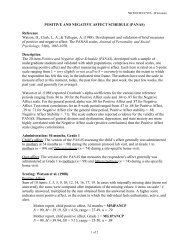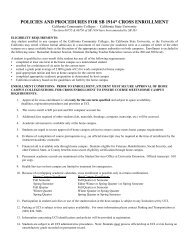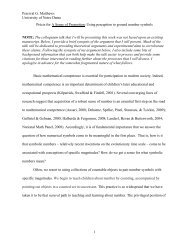Does Detracking Work? Evidence from a Mathematics Curricular ...
Does Detracking Work? Evidence from a Mathematics Curricular ...
Does Detracking Work? Evidence from a Mathematics Curricular ...
You also want an ePaper? Increase the reach of your titles
YUMPU automatically turns print PDFs into web optimized ePapers that Google loves.
<strong>Detracking</strong> 34population they did. However, these policies also unintentionally reinforced the academicisolation of a relatively small number of low-achieving students.It is possible, therefore, that policies that more fully eliminate instructional tracks, such asthe Long Island policy, may be more efficient and more equitable than policies that attempt tomake access to high-level courses within stratified course sequences more inclusive. However,our analysis suggests that the wholesale detracking strategy pursued in Long Island may alsopose risks. While curricular intensification in Towering Pines did not have a negative effect onachievement for students at the top of the skills distribution, this is largely due to the fact that thedistrict maintained a fairly selective 8 th grade Geometry classes for high-achieving students.While average incoming test scores for 8 th graders in Geometry declined over the study period asGeometry enrollments increased, very few students who had scored below basic in 7 th grademath enrolled in Geometry. This exclusionary policy seems to have boosted the returns toGeometry coursework in the district, and a more broad-based detracking policy might reversethose gains.Another approach that Towering Pines and other districts that undertake curricularintensification might pursue in order to avoid the negative peer effects that we observed is tofocus on improving incoming students’ skill readiness, particularly at the bottom of the skilldistribution. While Towering Pines raised the 7 th grade achievement scores of successive cohortsof students in preparation for taking more advanced 8 th grade mathematics courses, theproportion of students who scored below basic in 7 th grade remained relatively constant. Thesestudents’ early deficits likely constrained their ability to take advantage of the opportunity toenroll in more advanced coursework. Furthermore, our analyses suggest that the concentration oflow-achieving students in math classrooms hurt their classroom peers’ performance. By thinking


